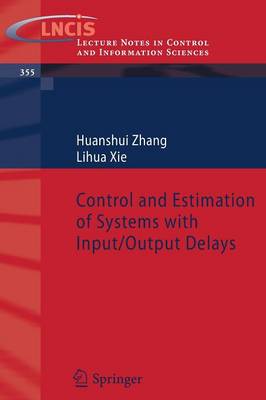Lecture Notes in Control and Information Sciences
2 primary works
Book 278
H_infinity Control and Filtering of Two-Dimensional Systems
by Chungling Du and Lihua Xie
Published 14 May 2002
Over the past decades a considerable interest has been concentrated on problems involving signals and systems that depend on more than one variable. 2-D signals and systems have been studied in relation to several modern engineering fields such as process control, multidimensional digital filtering, image enhancement, image deblurring, signal processing etc. Among the major results developed so far, 2-D digital filters are investigated as a description in frequency domain or as a convolution of the input and the unit response, which has a great potential for practical applications in 2-D image and signal processing. This monograph aims to address several problems of control and filtering of 2-D discrete systems. Specifically the problems of Hinfinity filtering, Hinfinity control, stabilization, Hinfinity model reduction as well as Hinfinity deconvolution filtering of 2-D linear discrete systems are treated.
Book 355
Control and Estimation of Systems with Input/Output Delays
by Huanshui Zhang and Lihua Xie
Published 5 April 2007
Time delay systems exist in many engineering ?elds such as transportation, communication, process engineering and more recently networked control s- tems. In recent years,time delaysystems haveattracted recurring interests from research community. Much of the research work has been focused on stability analysis and stabilization of time delay systems using the so-called Lyapunov- Krasovskii functionals and linear matrix inequality (LMI) approach. While the LMI approach does provide an e?cient tool for handling systems with delays in state and/or inputs, the LMI based results are mostly only su?cient and only numerical solutions are available. For systems with knownsingle input delay, there have been rather elegant- alytical solutions to various problems such as optimal tracking, linear quadratic regulation and H control. We note that discrete-time systems with delays can ? usually be converted into delay free systems via system augmentation, however, theaugmentationapproachleadsto muchhigher computationalcosts,especially for systems of higher state dimension and large delays. For continuous-time s- tems,time delayproblemscaninprinciple betreatedby thein?nite-dimensional system theory which, however,leads to solutions in terms of Riccati type partial di?
erential equations or operator Riccati equations which are di?cult to und- stand and compute. Some attempts have been made in recent years to derive explicit and e?cient solutions for systems with input/output (i/o) delays. These include the study ontheH controlofsystemswith multiple input delaysbased ? on the stable eigenspace of a Hamlitonian matrix [46].
erential equations or operator Riccati equations which are di?cult to und- stand and compute. Some attempts have been made in recent years to derive explicit and e?cient solutions for systems with input/output (i/o) delays. These include the study ontheH controlofsystemswith multiple input delaysbased ? on the stable eigenspace of a Hamlitonian matrix [46].

